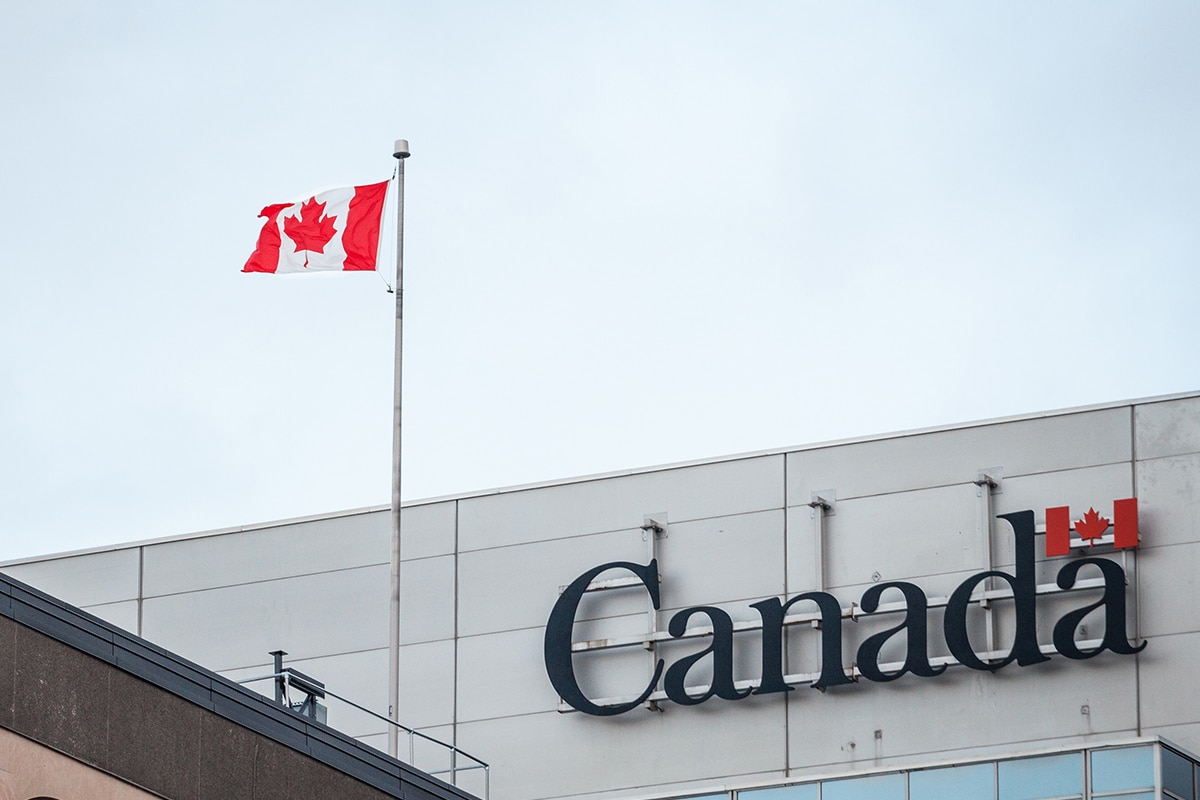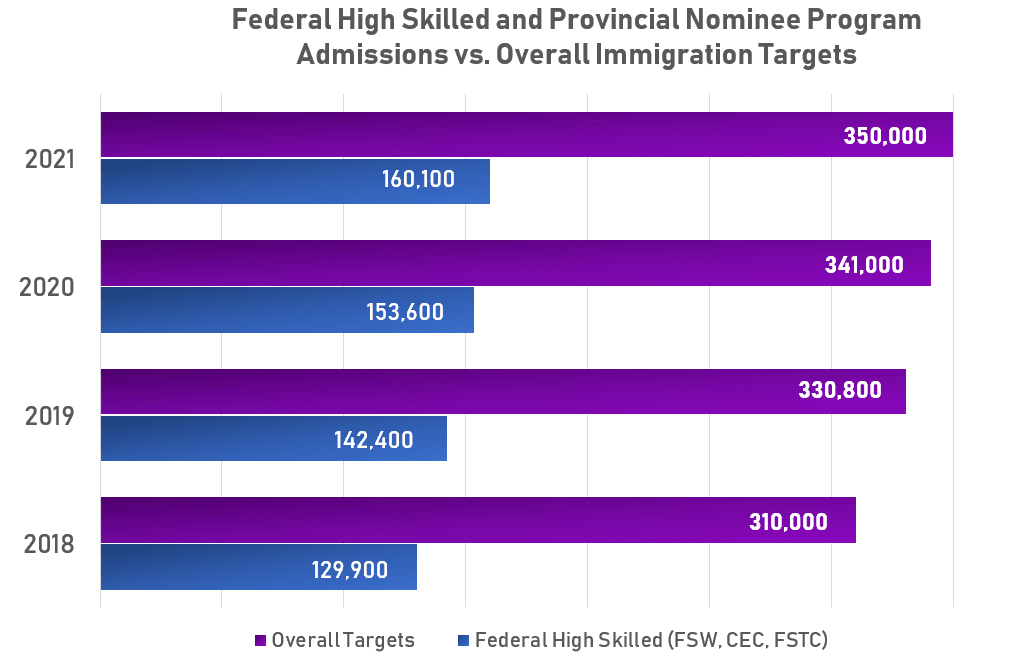Canada’s Provincial Nominee Program and the high-skilled economic immigration programs now managed by Canada’s Express Entry system are set to play increasingly vital roles in Canada’s immigration strategy over the next three years.
The combined admissions targets for these popular immigration programs are slated to reach 160,100 new permanent residents in 2021 under Canada’s new immigration levels plan released last week — an increase of 23 per cent over their combined 2018 targets of 129,900.
Together, the three Federal High Skilled programs — the Federal Skilled Worker Class, Federal Skilled Trades Class and the Canadian Experience Class — and Canada’s Provincial Nominee Program (PNP) will account for 44 per cent of the 1.3 million new permanent residents that Canada is planning to welcome between 2018 and 2021.


The admissions targets for 2018 to 2021 for Canada’s PNP and the three Federal High Skilled categories now managed by Express Entry are as follows:
| Year | Federal High Skilled Targets | Provincial Nominee Program Targets | Combined total |
|---|---|---|---|
| 2018 | 74,900 | 55,800 | 129,900 |
| 2019 | 81,400 | 61,000 | 142,400 |
| 2020 | 85,800 | 67,800 | 153,600 |
| 2021 | 88,800 | 71,300 | 160,100 |
Canada’s Express Entry system is the main driver of economic immigration to the country. Federal Skilled Worker Class, Federal Skilled Trades Class and the Canadian Experience Class candidates are ranked in the pool based on points awarded for human capital factors including education, work experience, age and proficiency in English or French.
The highest-ranked candidates are invited to apply for Canadian permanent residence through regular draws from the pool.
To find out if you are eligible to enter the Express Entry pool, fill out a free assessment.
Canada’s Provincial Nominee Program allows participating provinces and territories to nominate a set number of economic immigration candidates each year for permanent residence.
Every participating province and territory has at least one PNP stream that allows it to nominate Express Entry candidates for permanent residence. Express Entry candidates with a provincial nomination receive an additional 600 points toward their Express Entry ranking score and move to the front of the line for an Invitation to Apply (ITA) for Canadian permanent residence.
Of the 49,724 new permanent residents admitted to Canada through the PNP in 2017, 13,531 came through an Express Entry-linked PNP. This was a 73 per cent increase over Express Entry PNP admissions in 2016, according to Immigration, Refugees and Citizenship Canada (IRCC).
- Looking for more information on Canada’s Provincial Nominee Programs? Use the interactive Canada PNP Finder to explore programs, filter your search, and keep up to date on all PNP-related news
Overall, admissions through Canada’s various economic immigration programs accounted for nearly 60 per cent of all admissions to Canada in 2017, a proportion that the Government of Canada plans to maintain annually through 2021.
Federal High Skilled admissions
Admissions targets for the three Federal High Skilled programs are slated to increase by 18.5 per cent between 2018 and 2021 under the new multi-year levels plan, from 74,900 to 88,800 admissions.
More immediately, Federal High Skilled admissions targets are set for a year-over-year growth of 6,500 in 2019, to 81,400.
The target for the Express Entry-managed programs will then increase to 85,800 in 2020 and finally 88,800 in 2021.
For the current year, IRCC data for the first eight months of 2018 show just over 56,000 admissions to Canada under the three Federal High Skilled categories by the end of August, leaving Canada four months to reach its annual target of 74,900 for this category.
PNP admissions
Canada’s PNPs are also set to continue the growth they’ve experienced in recent years.
The admissions target for Canada’s Provincial Nominee Program, which is set at 55,000 for 2018, will grow by 29 per cent over the next three years.
In 2019, the PNP admissions target is set at 61,000, an increase of 5,000 over 2018.
For 2020 and 2021, IRCC is planning to raise the number of PNP admissions to 67,800 and 71,300, respectively.
In its annual report to Parliament tabled last week, IRCC said Canada’s PNPs have helped shift immigration landing patterns beyond Canada’s large cities such as Toronto, Ontario, Montreal, Quebec, and Vancouver, British Columbia.
According to IRCC, 34 per cent of economic immigrants in 2017 had destinations outside Ontario, Quebec and British Columbia, compared to just 10 per cent in 1997.
IRCC attributed this trend to the strength of Canada’s PNP programs, which it says have grown “exponentially” since the PNP’s implementation in 1996.
IRCC data for the first eight months of 2018 show 45,595 new admissions through PNPs in 2018, leaving it less than 10,000 away from its annual target of 55,000 with four months still to go in the year.
Discover your Canadian immigration options by completing a free assessment form.
© 2018 CICNews All Rights Reserved